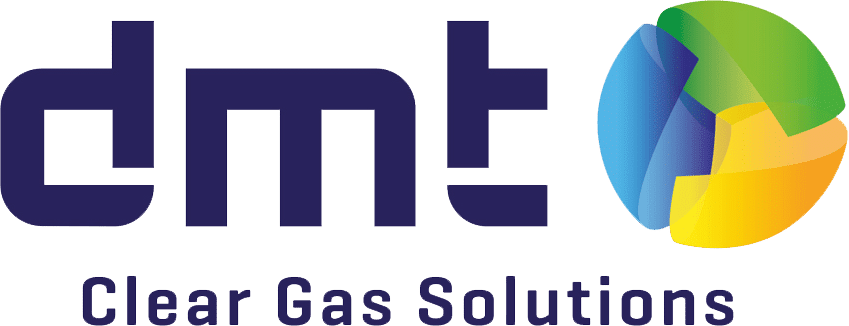No Pipeline for RNG Projects? No problem.
Use Virtual Pipeline Technology.
Author: Kyle Snyder, Stephen McCulloch, Missy Lee
Summary: Virtual pipeline technology replicates the continuous flow of a fixed physical pipeline, working where physical pipelines cannot. The benefits of a virtual pipeline include flexibility, carbon-neutral transportation, overcoming injection site roadblocks and ROI. This article also analyzes multiple case studies that use virtual pipelines to demonstrate cost saving benefits.
RNG project feasibility based on pipeline injection
Development within the renewable natural gas (RNG) industry often varies from project to project. When determining the feasibility of a potential RNG plant, ideally, there should be a pipeline injection point available. That or an injection point within the general geographic area of the site.
But what if there is no natural gas pipeline? Is the RNG project still feasible? Does installing 5 to 10 miles of pipeline at $500k-$1 million per mile make sense? What is the best way to gain the revenue available for these potential RNG projects that could generate a low carbon intensity (CI) score and, hence, a price per MMBTU 10 to 20 times more profitable than the value of conventional natural gas?
The answer may be a virtual pipeline.
What is a virtual pipeline?
A virtual pipeline replicates the continuous flow of a fixed physical pipeline, working where physical pipelines cannot to monetize RNG in regions with changing supply and demand centers. As a flexible and diverse approach, a virtual pipeline is based on a scalable and modular system where the RNG is treated, compressed (CNG) or liquefied (LNG), and stored on a mobile unit at its source location before transport. The RNG is then transported to a fueling station or to a central injection station for entry into the natural gas pipeline network.
Benefits of Virtual Pipeline Technology
The benefits of virtual pipeline technology include:
1. Flexibility.
In contrast to the natural gas supply, which is predictable and much larger in daily volume, a virtual pipeline provides the flexibility to keep RNG flowing as well as the option to use alternate injection centers. Virtual pipelines also open up markets where supply was unable to reach demand.
2. Carbon-neutral transportation.
Virtual pipelines also harness the transportation sector to monetize RNG. In doing so, virtual pipelines provide the same reliability and flexible augmentation from a physical pipeline network. Moreover, the trucks delivering the CNG or LNG can also be fueled by the same gas they are transporting. This makes them, therefore, independent of petrol sources while also providing carbon-neutral transportation.
3. Overcoming Injection Site Roadblocks.
Injecting RNG directly into the natural gas grid is not always profitable for potential RNG projects. The cost and complexity required for such an undertaking are not always suitable for RNG projects with a smaller production capacity or further away from an injection site. Virtual pipeline technology can overcome these roadblocks.
4. ROI.
A injection point cannot be established as quickly as the biogas upgrading facility. Gas injection stations usually take 12 to 18 months from concept to build for a potential RNG site with an existing anaerobic digester, whereas, DMT can provide a standard biogas upgrading system within 30 weeks. By using virtual pipeline technology, a customer can produce RNG within 5 to 11 months, thereby, gaining significant return on investment (ROI).
Virtual Pipeline Technology in Real Life
DMT is currently working on four RNG projects from dairy biogas that harness virtual pipeline technology. All four Wisconsin farms are within proximity to one another and use DMT’s high-selective membrane separation technology, the Carborex® MS, to separate CO2 from the CH4 stream.
Using a scheduled rotation, each dairy farm has a truck as well as a storage area large enough for one day of CNG-storage. A truck returning to the farm can refill from a combination of the stored CNG or DMT’s Carborex® MS.
Furthermore, each farm utilizes a gas testing center, including moisture, hydrogen sulfide (H2S), and a full gas chromatograph. This mirrors the testing found at an injection point. Additionally, this prevents any RNG that does not meet specification from getting shipped to the injection site—an error that could cost multiple days of expected revenue.

Cost savings benefit
A significant benefit to the four dairy farms mentioned is the cost savings. Not having to install pipeline to the nearest gas pipe saves clients money. Getting one farm to the nearest pipeline would have costed $1 to $2 million with an extended project timeline of 12 to 18 months. With four farms, that equates to a cost savings of $8 million. By being able to produce RNG within 5 to 11 months, these farms can produce $5 to $10 million of early revenue.
A virtual pipeline keeps development moving along.
Virtual pipelines can save or improve potential RNG projects. They offer the flexibility to keep development moving along where injection points are an issue or cause delay. As the value of RNG has increased, virtual pipeline technology is no longer a concept. It is an alternative option that can offer a quick return on investment.
